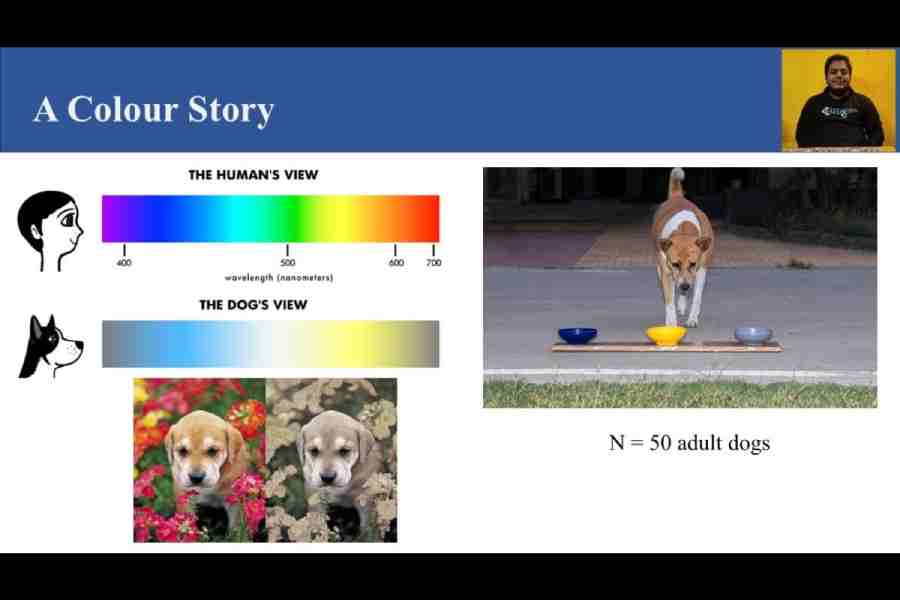Scientists in Calcutta have found street dogs showing a distinct preference for the yellow colour that can even trump the appeal of food, an observation they say offers fresh insights into how dogs interact with the world and warrants further investigation.
Researchers from the Indian Institute of Science Education and Research (IISER), Calcutta, have noted in field experiments that most free-ranging (stray) dogs move towards yellow-coloured bowls, with or without food, when offered a simultaneous choice of blue, grey or yellow bowls.
Their study is the first to demonstrate a clear preference for a specific colour in dogs and suggests that the colours dogs perceive might at times overrule their sense of smell in their decision-making.
In one experiment, 42 of 76 dogs offered bowls containing biscuits picked yellow bowls as their first choice, while 18 picked grey bowls and 16 picked blue bowls. In an experiment without food, 30 of 58 dogs chose yellow, and 14 each chose blue and grey.
More crucially, among 52 dogs offered either grey bowls containing biscuits
or empty yellow bowls, 41 dogs opted for the yellow bowls as their first choice and 11 went for the grey bowls.

A dog that participated in the study moves towards a yellow bowl while ignoring the blue and grey bowls Sourced by The Telegraph
The preference for yellow showed up even when the scientists offered chicken in place of biscuits. Among 61 dogs enticed with chicken pieces in grey bowls, 47 opted for the empty yellow bowls.
“Their preference for empty yellow bowls over grey bowls that contained food took us by complete surprise,” Anindita Bhadra, professor and animal behaviour specialist in the IISER’s biological sciences department who supervised the study, told
The Telegraph.
The study has been accepted for publication in the research journal Animal Cognition.
Anamitra Roy, a research scholar at the IISER and first author of the study, said: “They could smell the chicken and they could see the chicken, but they picked empty yellow bowls. In this situation, they trusted their eyes more than their noses.”
Earlier studies by research groups elsewhere had underlined colour preferences in some animals. For instance, zebrafish avoid blue, chimpanzees and gorillas prefer blue and green, and tadpoles favour green.
Researchers at the University of California, Santa Barbara, had established through studies on three domestic dogs in 1989 that dogs have dichromatic colour vision — they can identify only blue and yellow apart from black, white and shades of grey.
Most studies have since then focused on understanding the limits of caninecolour vision.
“We’ll need more research to understand what might be causing free-ranging dogs to show this strong preference for yellow,” Bhadra said.
The scientists speculate that the dogs may have acquired this preference through long-term exposure to the hues of turmeric or red chilli used in Indian cuisine, and likely to be found in food leftovers that free-ranging dogs scavenge.
Earlier colour-vision studies on dogs had suggested that pink raw meat or red blood appears yellow to dogs. “The preference for yellow might then have been genetically inherited and could have predated the domestication of dogs from wolves,” Bhadra said.
The IISER researchers conducted their experiments over several months at multiple sites in urban and rural locations across Calcutta, Nadia and North 24-Parganas, looking for street dogs, laying out the coloured bowls, with or without food, and recording the dogs’ movements.










